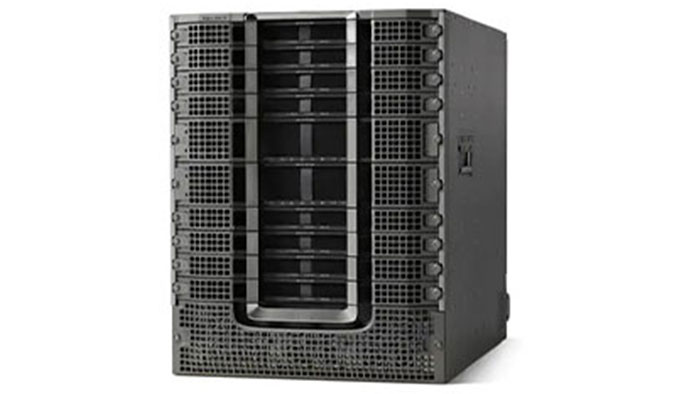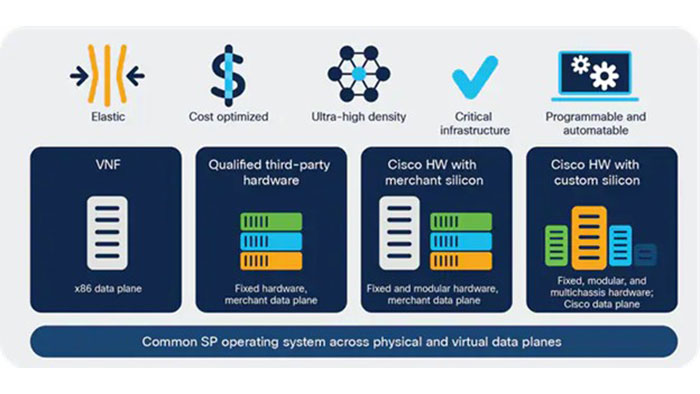The licensed Cisco cBR Router is a cable modem termination system (CMTS) designed to provide high-speed broadband access to residential and commercial customers. It is a modular, scalable, and flexible platform that supports both DOCSIS and PacketCable network architectures. In this article, we will explore the features and benefits of the cBR Router, its hardware and software architecture, as well as best practices for deploying and troubleshooting it.

The licensed Cisco cBR Router offers a wide range of features and benefits, including:
The platform can support up to 64 downstream and 16 upstream channels, allowing service providers to deliver high-speed broadband services to a large number of customers.
The licensed cBR Router supports channel bonding, which enables multiple downstream and upstream channels to be combined to increase bandwidth and improve network efficiency.
The platform is designed with a modular architecture that allows service providers to add or remove components as needed, reducing costs and increasing flexibility.
The cBR Router features redundant power supplies and hot-swappable components, ensuring high availability and minimal downtime.
The licensed Cisco cBR Router is built on a hardware platform that includes a chassis, line cards, and forwarding cards. The chassis provides the physical housing for the components and supports up to eight line cards and four forwarding cards. The line cards handle the physical interface between the cable network and the router, while the forwarding cards are responsible for processing and forwarding network traffic.
The software architecture of the Cisco cBR Router includes several components, including the Cisco IOS XR operating system, the Cable Modem Termination System (CMTS) software, and the Broadband Subscriber Management (BSM) software. The IOS XR operating system provides a modular and scalable platform for network routing and management, while the CMTS and BSM software are responsible for managing cable modems and providing subscriber management services.

To achieve high performance with the Cisco cBR Router, several configuration settings must be optimized, including channel bonding, load balancing, and traffic shaping. Service providers must also ensure that the router is configured with the appropriate security settings, such as access control lists (ACLs) and firewalls, to prevent unauthorized access and protect the network from security threats.
When troubleshooting the Cisco cBR Router, service providers must be familiar with the various tools and techniques available, including packet capture and analysis, log analysis, and SNMP monitoring. Service providers must also be familiar with the common issues that can affect the performance of the cBR Router, such as network congestion, hardware failure, and software bugs.
To ensure a successful deployment of the Cisco cBR Router, service providers must follow several best practices, including conducting a thorough site survey, configuring the router for high availability, and implementing appropriate security measures. Service providers must also ensure that the Cisco cBR Router is compatible with other network components and that it meets the performance requirements of the network.
The licensed Cisco cBR Router has several use cases in cable networks, including providing high-speed broadband access to residential and commercial customers, delivering voice and video services, and supporting mobile backhaul for 4G and 5G networks.
The Cisco cBR Router competes with other CMTS solutions, such as the Arris E6000 and the Casa Systems C100G. Compared to the Arris E6000, the cBR Router offers higher scalability and flexibility, while the Casa Systems C100G is known for its high performance and low latency. Service providers must evaluate the features and performance of each solution to determine which one is best suited for their network.
Cisco is constantly working on improving the features and performance of the licensed Cisco cBR Router. Some of the recent developments include support for Remote PHY, a technology that separates the physical layer of the network from the rest of the CMTS, and support for Full Duplex DOCSIS, a technology that enables symmetrical upload and download speeds. Service providers must stay up-to-date with the latest developments and enhancements to ensure that their network is optimized for performance and scalability.

The licensed Cisco cBR Router is a highly scalable, modular, and flexible platform that enables service providers to deliver high-speed broadband services to a large number of customers. By understanding the hardware and software architecture of the router, configuring it for high performance, and following best practices for deployment and troubleshooting, service providers can ensure that their network is optimized for performance and reliability. With the constant developments and enhancements in the industry, service providers must continue to evaluate and optimize their network infrastructure to stay ahead of the competition.